In the EU - to wash? How hot water in Ukraine becomes a luxury item. Why go: for natural mud wraps. Why go: relax in futuristic style
Every Briton is heated "alone". There is simply no such thing as central heating in this country. Boilers are installed in houses and apartments - individual gas water heaters that heat water and batteries. Depending on the desire and capabilities of the owner, you can either freeze, saving on heating, or heat with might and main, heating the batteries.

As a rule, there are no batteries in toilets and bathrooms - in winter the temperature in them does not rise above 10 degrees. There will be no heating in the bedroom either - the British usually sleep in pajamas under a warm blanket. Burning all night is expensive. A timer is set on the boiler, each hour is divided into 4 divisions of 15 minutes. You set the alarm for 7 in the morning, and you program the boiler for 6:45 to wake up warm; at 8:30 you go to work - the boiler is programmed to turn off.

Heating in Britain is only a few hours a day, very economical and incredibly environmentally friendly. British physiologists have compiled a table-instruction: above 21 degrees - the temperature of discomfort, above 24 - the temperature, which increases the risk of heart attacks. The lower threshold of comfort is 18 degrees. From 16 to 18 - the temperature is normal, the risks are low, and this temperature is maintained in the winter in five million households in Britain. Electricity and gas companies (this is a competitive market, and you can choose who to buy heat from, much like you choose which gas station to fill up your car at), give a list of tips on how to stay warm in winter. And one of them is to get a cat. Because the cat is warm and does not consume electricity.
Poor residents of the United Kingdom are also somehow adapting and getting out. Some go to warm up in local libraries, where it is warm, cozy and the Internet is free.

The population is given advice on saving. For example, it is not recommended to run washing machine“idle” - you have to wait until the tank is filled with dirty laundry to the eyeballs. It is advised to wash in cold water, it is more useful for linen than hot water. Turn off the computer when it is idle without work. Don't leave your cell phone on charge all night. Use energy saving light bulbs. Take a short shower instead of a long bath.
Japan

The central heating system is only in Hokkaido prefecture - the coldest part of the country. The rest of the population of Japan heats themselves on their own.

Most modern homes in Japan are heated with electric air conditioners (winter/summer) and space heaters. various types: electric, oil, kerosene or gas. In the cold season, the Japanese wear warm light pajamas, the material of which includes special fibers that retain heat very well, or they use electric blankets over ordinary blankets.

Electric carpets are very popular in Japan. Such a carpet resembles an electric blanket. The user can adjust the heating temperature. You can heat only part of the carpet, where, for example, you are sitting.
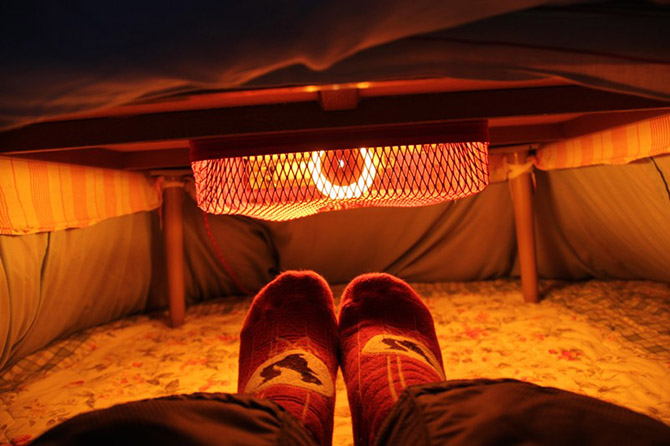
Another attribute of Japanese culture that is traditionally used for heating is kotatsu. It is in every Japanese home. A modern kotatsu is a table with a heating element installed under the lid. Kotatsu also existed in ancient Japan, although in those days it was called and looked somewhat different.

Traditionally, the whole family gathers around the kotatsu not only for dinner, but also for conversations, joint board games watching TV. Kotatsu unites the whole family from young to old, emphasizes family unity and warmth of relationships. Gathered under a common blanket, children literally learn to "not drag the blanket over themselves."

By the way, there is no heating in Japanese schools. In recreational areas there are local heating points where children can warm their hands during breaks.
Germany

In Germany, too, there is no central heating in the form in which we are accustomed to it. Here everyone warms himself. In private houses - their own boiler rooms, in apartment buildings - separate gas equipment that heats water for batteries. How much gas burned, so much and paid.
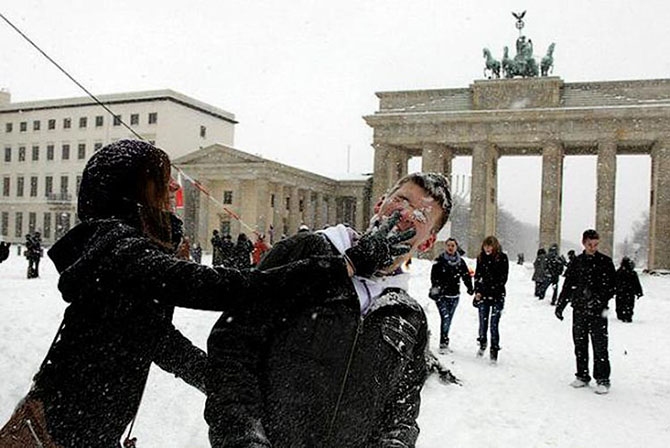
All batteries have valves with thermostats, they regulate the temperature in the room. In the living room, where the family spends a lot of time, the heating is turned on harder, and in the toilet - at the very minimum. There are even special recommendations for the temperature regime of the premises. For the hall, 20 degrees of heat is enough, for the bathroom up to 22 degrees, in the bedrooms 16-18 degrees of heat are needed. In little-used rooms (toilets, pantries, etc.), the air temperature should be 14-16 degrees Celsius.
“If circumstances permit (lack of small children), keep the temperature lower. By reducing the room temperature by 1 degree, you save up to 6% of thermal energy. Reducing the temperature from 24 degrees to 20 degrees will provide up to 24% heat savings,” the recommendations say.
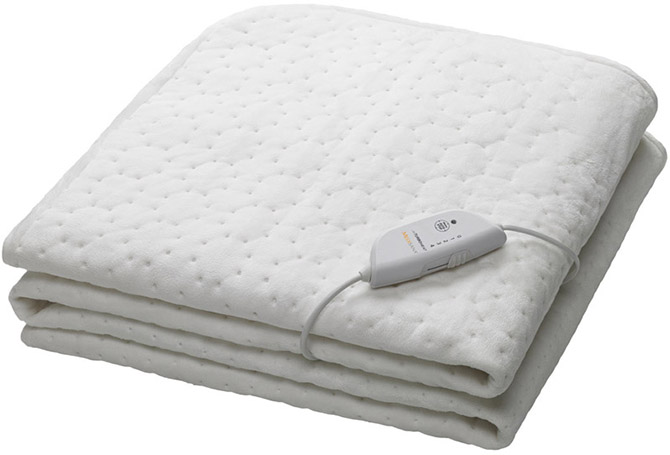
At night, the Germans often use electric sheets - a heating pad for the whole body. It turns on and off automatically.
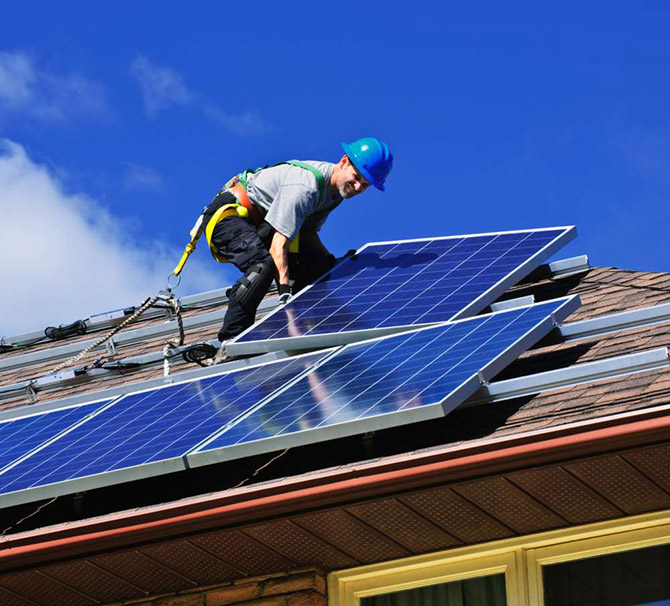
German homeowners are increasingly willing to use biomass, firewood, wood waste pellets, heat pumps and solar panels to heat individual homes. The state supports this trend legislatively and financially. Recently, a law came into force in Germany, according to which new buildings put into operation are required to receive part of the energy consumed from renewable sources. Thanks to various government programs, homeowners who have switched to environmental fuels are reimbursed up to 15% of the cost of acquiring and installing new equipment.
France

There is no central heating in our understanding in France.
Instead, there are two options:
1. General house heating- this is centralized heating in a separate apartment building. It is turned on by the leadership of the house. Apartments in such houses are not equipped with heating equipment.
2. Individual heating. In the bathroom, toilet or kitchen there is a device that regulates hot water. It is electric or gas.
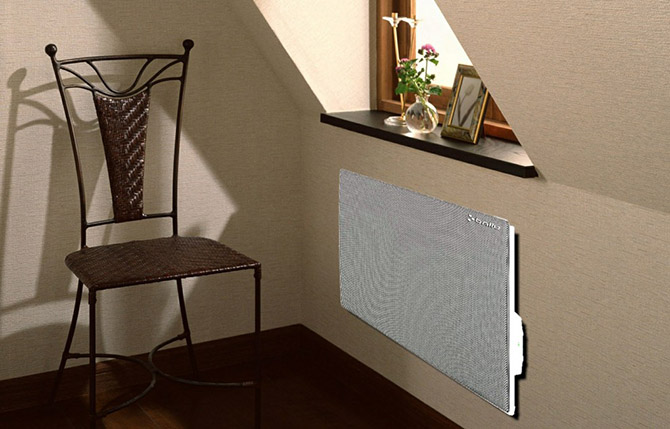
Batteries are also connected to this device. The heat in the apartment is regulated. Electric heaters are more common than gas ones. Their main advantage is that they do not require regular and expensive checks and support, like gas ones. Their use is included in the total electricity bill.
The tariff for electricity in the country is double: full - from 7:00 to 23:00 and preferential, that is, one and a half times less - from 23:00 to 7:00. For several decades now, the state has been encouraging citizens to save energy in every possible way. And not only with the help of the tariff policy.
![]()
A powerful lever is fiscal. All French people who carry out work on the thermal insulation of their homes, old or newly built, have the right by law to enter the money spent on the tax return. In this case, from 25 to 50% of the cost of work will be credited to them with a minus sign and may reduce income tax.
The same applies to the installation of various kinds of energy-saving environmentally beneficial equipment - solar panels, heaters with increased energy efficiency, both gas and electric. Citizens receive preferential loans for their purchase. In terms of new housing, since 2008, every project over 1,000 square meters must comply with the new thermal insulation requirements. Otherwise, it is not accepted and sent for revision.
Finland

Increasingly, the new Finnish house draws energy like the mythological Antaeus - from the Earth. Indeed, in the conditions of Finland at a depth of 200 meters, the temperature can reach up to +10 degrees. Finnish rocks are like giant radiators: they accumulate heat in summer and release it in winter.

In Finnish houses, a special device is installed: a heat pump. It costs, of course, not cheap, but it pays off in 5-7 years and allows you to save 30 percent or more of electricity. It is not surprising that such figures tempt owners of old houses to refurbish their homes.
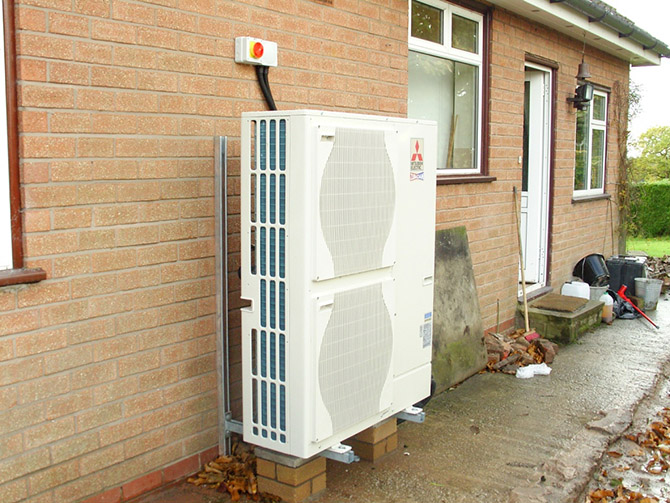
The Finns made even the surrounding air work for them - imagine a refrigerator turned inside out, where the cold part is outside, and heating system with a circulating special substance - indoors. In frosts down to -25˚, this works perfectly: having spent 1 kW of electricity on work, the heat pump will produce up to 2 or even 5 kW of heat.

Such a "warm" refrigerator, or rather air conditioning, is effective for small houses - no more than 120 meters of living space. But for small houses this is a real find: no need to drill the ground and install expensive equipment: all costs are no more than 2000-3000 euros.
Taking a hot bath after a long and hard day means giving yourself moments full of pleasure. But still, there is little that can compare with the revitalizing effect of thermal springs. In this article, we offer you 20 the best places Europe, where you can immerse yourself in the tranquility of hot, healing thermal waters.

Blue Lagoon, Iceland
Why go: see for yourself to believe
Nestled on a plateau of solidified lava just 30 km from Reykjavik, this bright azure lake can easily be mistaken for another miracle of unearthly Icelandic nature. However, in fact, this is a complex created by man. Mineralized water is also used at the Svartsengi geothermal power plant. Once in the Blue Lagoon, you can not only enjoy all the benefits of silica- and mineral-rich water and stunning views, but also experience the healing properties of white, silica-rich geothermal mud, which has medicinal properties.
Therme Vals Resort, Switzerland
Why go: experience Alpine chic
This minimalist spa complex is so popular today that visitors are not embarrassed that it is located 200 km from Zurich. Guests are willing to travel such a long journey to enjoy healing properties local lakes. Stay at the hotel, which is part of the Therme Vals complex (www .therme -vals .ch /en ), which was designed by the eminent Swiss architect Peter Zumthor, and be sure to treat yourself to a nightly hydrotherapy session under the starry sky.
Hot springs and spas, Bath, UK
Why go: feel the romance of the UK's hot springs
The healing waters of Bath are the only thermal pool in the UK. Therefore, since its discovery by the legendary British prince Bloodud in 863 BC. everyone rested here, from the Celts to the Saxons. There is a historical museum of Roman baths, and the Bath Thermal Spa has herbal steam baths and 4 thermal pools, including an open-air pool with a romantic view of Bath Abbey.
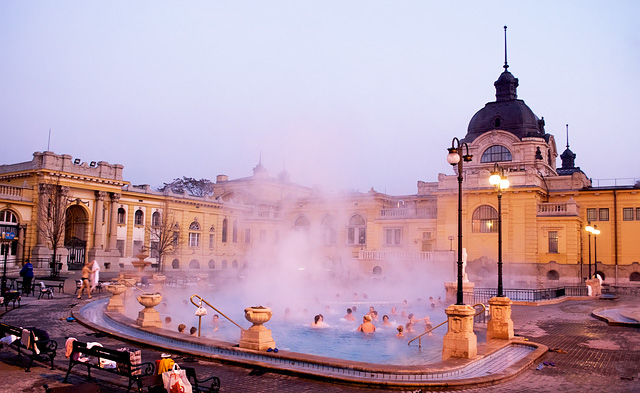
Széchenyi Thermal Complex, Budapest, Hungary
Why go: there is a place for everyone
Famous as a city of spa centers, Budapest still offers guests and local residents a huge number of Turkish baths built in the 16th and 17th centuries. One of the main attractions in the Hungarian capital is the Széchenyi thermal complex, built in the neo-baroque style. Located in the city park, it combines 18 different pools and 10 types of saunas and steam rooms.
Laugarvatn Fontana, Iceland
Why go: give yourself moments of heavenly solitude
Located 77 km from Reykjavik, the pools of the modern complex Laugarvatn Fontana (www .fontana .is ) are located on the picturesque geothermal lake Laugarvatn. The local sand is prescribed for people with arthritis and other joint problems, and the sulfate steam rooms built right next to the bubbling spring are unique in principle.
Lake Heviz, Heviz, Hungary
Why go: to feel unity with nature
Lilies on the mirror-like surface of the water, a well-groomed park... It is incredibly beautiful here. But still, the main wealth of these beautiful places is a natural lake with healing water. The spa center created on its basis (www .spaheviz .hu /en ) is ideal for visits both in winter and summer, when the water temperature reaches 38°C, and swimming in the fresh air at this time is very comfortable and pleasant.

Karlovy Vary (Carlsbad), Czech Republic
Why go: for absolute relaxation
The mineral springs of Karlovy Vary were discovered by the Roman emperor Charles IV and founded a real Czech spa resort here. It is believed that the water here has medicinal properties and is recommended for both internal and external use. Many hotels (for example, the famous Carlsbad Plaza) have their own traditional fonts. And you can taste the water from the source in one of several ancient colonnades of the city.
Ban de Dorr, Pyrenees, France
Why go: enjoy superb views
An unobtrusive alternative to France's more serious medical baths, this thermal spa is located right at the source. The main trump card of this place is the opportunity to take a bath, enjoying a stunning view of the stretching valleys. The water temperature here reaches 37-40°C. Ban de Dorres is located (www .bains -de -dorres .com ) literally a stone's throw from the Spanish border.
Pantelleria, Italy
Why go: even here there was a place for fashion
Pantelleria is a tiny island of volcanic origin located in the Strait of Sicily, not far from Tunisia. There are a number of natural fonts here. Of the most popular, we note the Gulf of Gadir, in the healing waters of which local residents like to swim (in particular, Giorgio Armani, who has Vacation home). These waters are said to help with rheumatism and arthritis.
Rogner Bad Blumau, Styria, Austria
Why go: get an idea of what a spa resort would look like if Tolkien designed it
Artfully crafted Babylon on the water. This incredible and quirky spa resort in southeastern Austria is the work of the eccentric local architect, Friedensreich Hundertwasser. The water here comes from two healing springs, and the resort itself, Rogner Bad Blumau (blumau.com), boasts salt caves lined with lakes and pools, making this place similar to the Dead Sea resorts. A local hotel with rooftop gardens and meadows is most reminiscent of Hobbitania.
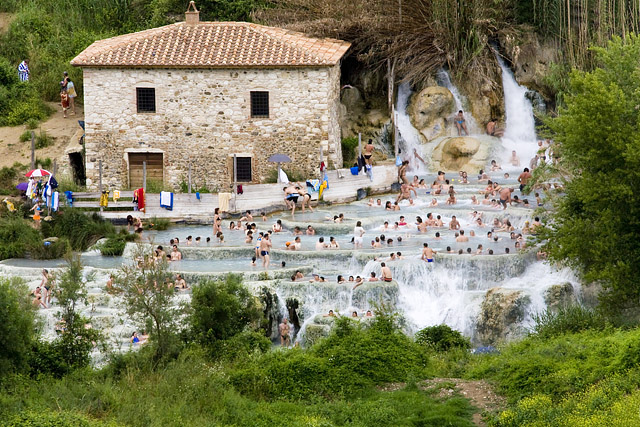
Baths of Saturnia, Tuscany, Italy
Why go: visit the fountain of youth
A truly picturesque and peaceful place in Tuscany, the Baths of Saturnia (www .termedisaturnia .it ) can be attributed to the oldest thermal spas in Italy. The water here is renewed every four hours from a source of volcanic origin. The water temperature in the main pool is maintained at a comfortable level - 37.5 ° C. You don't have to stay at the spa itself. Mud wraps and a wide range of spa treatments are available for all visitors.
Therme Kaiser-Friedrich Therm, Wiesbaden, Germany
Why go: escape from reality
In 2013, the Kaiser Friedrich Therm is celebrating its 100th anniversary. The complex was built on the site of the Roman Art Nouveau saunas. In addition to the thermal pool, the spa center includes a Russian steam room and a classic Finnish sauna.
Paglia Kameni, Greece
Why go: for natural mud wraps
Oddly enough, this place is not yet used for commercial purposes. The island of volcanic origin, near Santorini, is known for its crystal-blue springs and therapeutic sulphurous mud. The name is translated from Greek as "burnt for centuries." You can get to Paglia Kameni from Santorini by boat. To get to the main source, you need to sail from the ship on your own - it is located right in the sea.
Banos Arabes, Granada, Spain
Why go: Experience Arabian-style luxury pleasure
This traditional hammam was closed in the 16th century due to the order of the Christian rulers of Spain to close the Moorish baths of Andalusia, and then was the first of all to be reopened. Today, the richly decorated complex of Banos Arabes (translated as Arabic baths) (granada .hammamalandalus .com /en) is the perfect place to appreciate how luxurious a vacation at the thermal springs can be.

Aqua House, Tyrol, Austria
Why go: relax in futuristic style
Discovered in the 16th century, the Langefeld geothermal spring almost completely dried up in the 1960s. In 1997, he was literally presented with new life, and now there is a real Alpine Tyrolean resort, famous for its outdoor pools, as if “floating” in the air. By the way, for lovers of romance, on Friday nights are organized here by moonlight.
Terme Rogaška, Rogaška, Slovenia
Why go: for authentic Eastern European elegance
Terme Rogaska is part of the Belle Epoque style Grand Hotel Rogaska (www .terme -rogaska .si ). This is the most sophisticated and famous spa complex in Slovenia. There are thermal pools, therapeutic waterfalls and massage baths. The water comes from a calcium-rich source and is said to contain minerals that help improve digestion.
Andorra la vela, Andorra
Why go: hang out with skiers after check-intotal area lakes in the cavernous spa complex of Caldea (www .caldea .com /es /es .html ), in the capital of Andorra, is 6000 m². The water comes from a source rich in sulfur, and the complex itself is the largest thermal resort in southern Europe. For those who want to enjoy solitude, it is better to stay in one of the thermal spa hotels in the city, for example, in Roc Blanc (Roc Blanc - www .rocblanc .com /en).

Pamukkale, Denizli Province, Turkey
Why go: see the incredible wonder of nature
Translated from Turkish, Pamukkale means "cotton palace". This delightful natural complex has been used for centuries to heal bodily infirmities and diseases. The hot springs resulting from the accumulation of carbonate minerals now run through the remains of the ancient Greek-Roman and Byzantine city of Hierapolis.
Chateau de Thermes, Chaudfontaine, Belgium
Why go: indulge your every weakness
This luxury spa resort is located near Liege, in the Vesdre Valley and is based on Belgium's hottest thermal spring. There are two Turkish hammams, a Roman steam room and a salt cabin. The latter is used to treat various kinds of skin problems. Also, the Château de Therme (www .chateaudesthermes .be /en ) is said to have an excellent French restaurant.
Pestans, Slovakia
Why go: take a spa hotel run
The most important thing in Piestany, the largest spa resort in Slovakia, is therapeutic mud (Piestany - www.spapiestany.sk). This Slovak village is located in the west of the country, 86 km from Bratislava. Most of the thermal lakes, where various spa hotels are located, are concentrated on the so-called "spa island" - surrounded by luxurious forest park areas.
It turns out that in some countries of Europe and Asia there is simply no central heating, but the locals do not freeze there at all in winter.
(Total 22 photos)
Post sponsor:
Great Britain

Every Briton is heated "alone". There is simply no such thing as central heating in this country. Boilers are installed in houses and apartments - individual gas water heaters that heat water and batteries. Depending on the desire and capabilities of the owner, you can either freeze, saving on heating, or heat with might and main, heating the batteries.

As a rule, there are no batteries in toilets and bathrooms - in winter the temperature in them does not rise above 10 degrees. There will be no heating in the bedroom either - the British usually sleep in pajamas under a warm blanket. Burning all night is expensive. A timer is set on the boiler, each hour is divided into 4 divisions of 15 minutes. You set the alarm for 7 in the morning, and you program the boiler for 6:45 to wake up warm; at 8:30 you go to work - the boiler is programmed to turn off.

Heating in Britain is only a few hours a day, very economical and incredibly environmentally friendly. British physiologists have compiled a table-instruction: above 21 degrees - the temperature of discomfort, above 24 - the temperature, which increases the risk of heart attacks. The lower threshold of comfort is 18 degrees. From 16 to 18 - the temperature is normal, the risks are low, and this temperature is maintained in the winter in five million households in Britain. Electricity and gas companies (this is a competitive market, and you can choose who to buy heat from, much like you choose which gas station to fill up your car at), give a list of tips on how to stay warm in winter. And one of them is to get a cat. Because the cat is warm and does not consume electricity.

Poor residents of the United Kingdom are also somehow adapting and getting out. Some go to warm up in local libraries, where it is warm, cozy and the Internet is free.

The population is given advice on saving. For example, it is not recommended to run the washing machine "idle" - you have to wait until the tank is filled with dirty laundry to the eyeballs. It is advised to wash in cold water: it is more beneficial for linen than hot water. Turn off the computer when it is idle without work. Don't leave your cell phone on charge all night. Use energy saving light bulbs. Take a short shower instead of a long bath.
Japan

The central heating system is only in Hokkaido prefecture - the coldest part of the country. The rest of the population of Japan heats themselves on their own.

Most modern houses in Japan are heated by electric air conditioners (winter/summer) and heaters of various types: electric, oil, kerosene or gas. In the cold season, the Japanese wear warm light pajamas (the material of which includes special fibers that retain heat very well) or use electric blankets over ordinary blankets.

Electric carpets are very popular in Japan. Such a carpet resembles an electric blanket. The user can adjust the heating temperature. You can heat only part of the carpet, where, for example, you are sitting.

Another attribute of Japanese culture that is traditionally used for heating is kotatsu. It is in every Japanese home. A modern kotatsu is a table with a heating element installed under the lid. Kotatsu also existed in ancient Japan, although in those days it was called and looked somewhat different.

Traditionally, the whole family gathers around the kotatsu not only for dinner, but also for conversations, joint board games, and watching TV. Kotatsu unites the whole family from young to old, emphasizes family unity and warmth of relationships. Gathered under a common blanket, children literally learn to "not drag the blanket over themselves."
![]()
By the way, there is no heating in Japanese schools. In recreational areas there are local heating points where children can warm their hands during breaks.
Germany
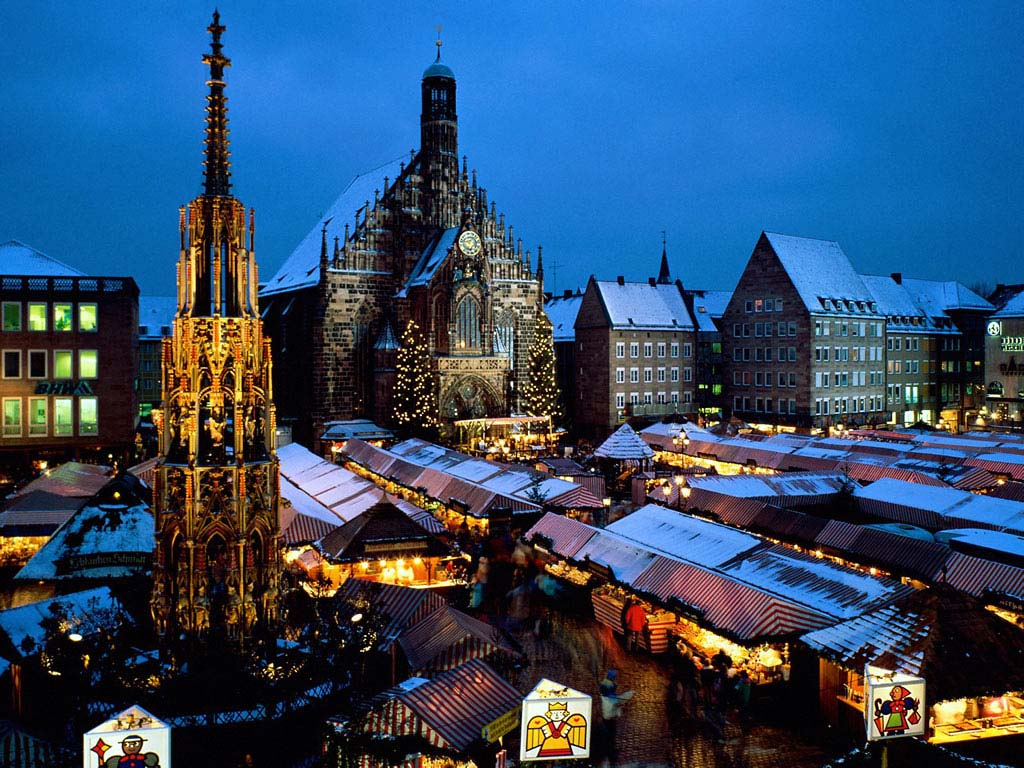
In Germany, too, there is no central heating in the form in which we are accustomed to it. Here everyone warms himself. In private houses - their own boiler rooms, in apartment buildings - separate gas equipment that heats water for batteries. How much gas burned - so much and paid.
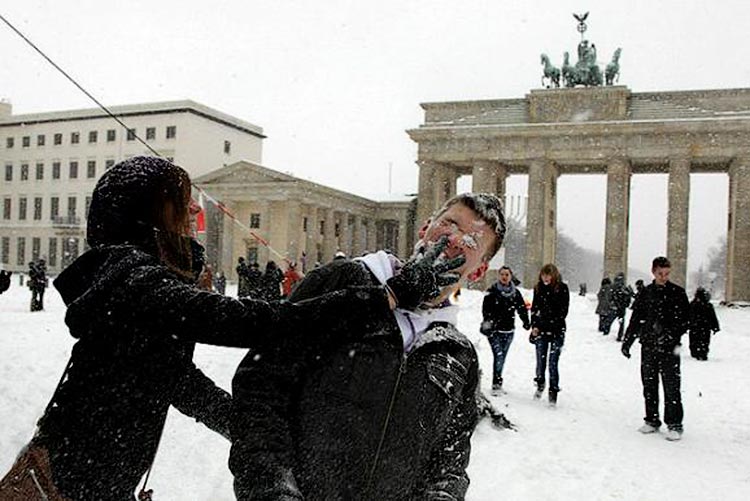
All batteries have valves with thermostats, they regulate the temperature in the room. In the living room, where the family spends a lot of time, the heating is turned on harder, and in the toilet - at the very minimum. There are even special recommendations for the temperature regime of the premises. For the hall, 20 degrees of heat is enough, for the bathroom - up to 22 degrees, in the bedrooms you need 16-18 degrees of heat. In little-used rooms (toilets, pantries, etc.), the air temperature should be 14-16 degrees Celsius.
“If circumstances permit (lack of small children), keep the temperature lower. By reducing the room temperature by 1 degree, you save up to 6% of thermal energy. Reducing the temperature from 24 to 20 degrees will provide up to 24% heat savings,” the recommendations say.
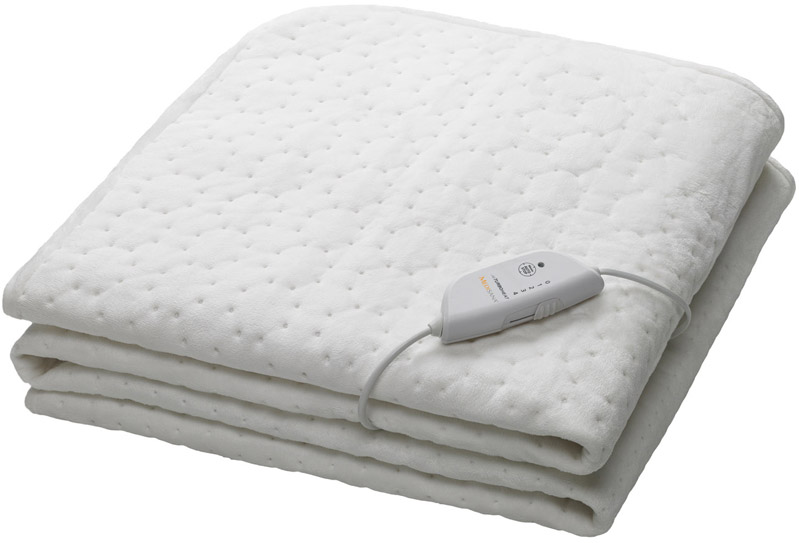
At night, the Germans often use electric sheets - a heating pad for the whole body. It turns on and off automatically.

German homeowners are increasingly willing to use biomass, firewood, wood waste pellets, heat pumps and solar panels to heat individual homes. The state supports this trend legislatively and financially. Recently, a law came into force in Germany, according to which new buildings put into operation are required to receive part of the energy consumed from renewable sources. Thanks to various government programs, homeowners who have switched to environmental fuels are compensated up to 15% of the cost of acquiring and installing new equipment.
France

There is no central heating in our understanding in France.
Instead, there are two options:
1. General building heating is centralized heating in a single apartment building. It is turned on by the leadership of the house. Apartments in such houses are not equipped with heating equipment.
2. Individual heating. In the bathroom, toilet or kitchen there is a device that regulates hot water. It is electric or gas.
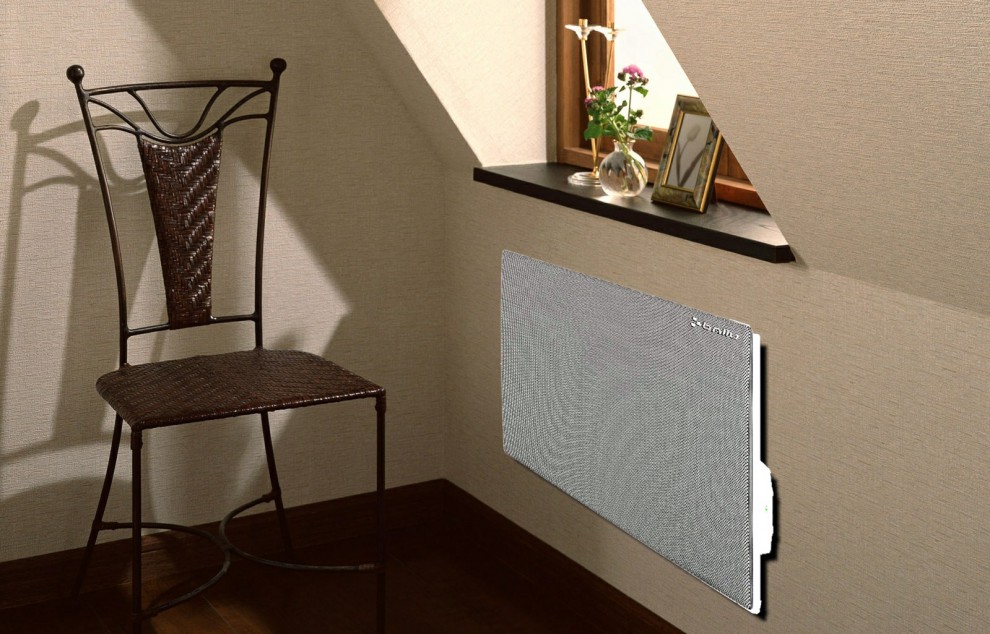
Batteries are also connected to this device. The heat in the apartment is regulated. Electric heaters are more common than gas ones. Their main advantage is that they do not require regular and expensive checks and support, like gas ones. Their use is included in the total electricity bill.
The tariff for electricity in the country is double: full - from 7:00 to 23:00 - and preferential, that is, one and a half times less - from 23:00 to 7:00. For several decades now, the state has been encouraging citizens to save energy in every possible way. And not only with the help of the tariff policy.
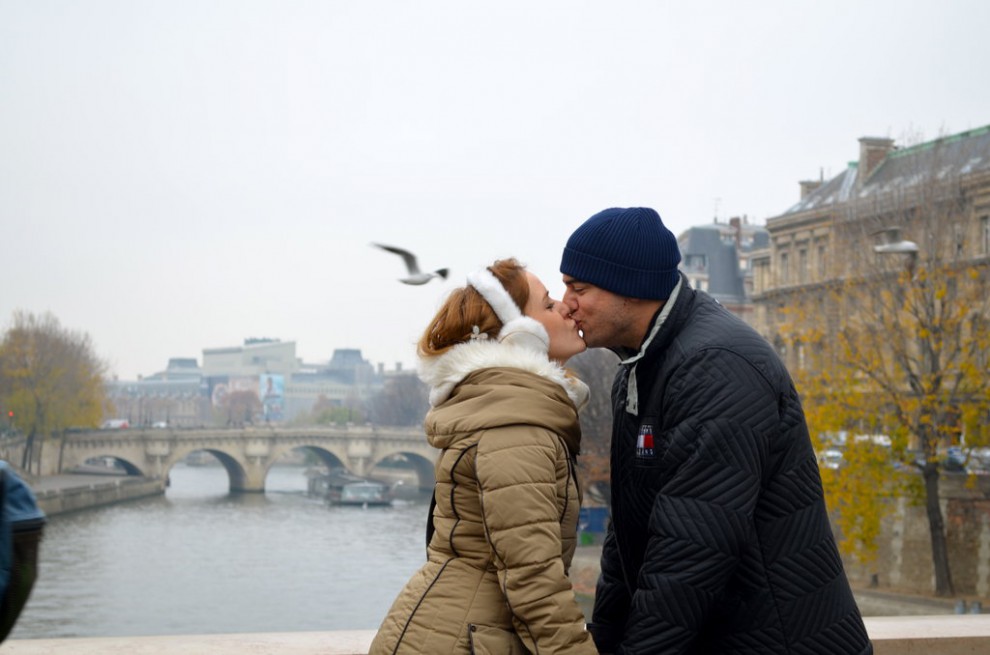
A powerful lever is fiscal. All French people who carry out work on the thermal insulation of their homes, old or newly built, have the right by law to enter the money spent on the tax return. In this case, from 25 to 50% of the cost of work will be credited to them with a minus sign and may reduce income tax.
The same applies to the installation of various kinds of energy-saving environmentally beneficial equipment - solar panels, heaters with increased energy efficiency, both gas and electric. Citizens receive preferential loans for their purchase. With regard to new housing, starting in 2008, every project over 1,000 square meters must comply with the new thermal insulation requirements. Otherwise, it is not accepted and sent for revision.
Finland

Increasingly, the new Finnish house draws energy like the mythological Antaeus - from the Earth. Indeed, in the conditions of Finland at a depth of 200 meters, the temperature can reach up to +10 degrees. Finnish rocks are like giant radiators: they accumulate heat in summer and release it in winter.

In Finnish houses, a special device is installed - a heat pump. It costs, of course, not cheap, but it pays off in 5-7 years and allows you to save 30 percent or more of electricity. It is not surprising that such figures tempt owners of old houses to refurbish their homes.

The Finns made even the surrounding air work for them - imagine a refrigerator turned inside out, where the cold part is outside, and the heating system with a circulating special substance is indoors. In frosts down to -25 ˚C, this works perfectly: having spent 1 kW of electricity on work, the heat pump will produce up to 2 or even 5 kW of heat.

Such a "warm" refrigerator, or rather air conditioning, is effective for small houses - no more than 120 meters of living space. But for small houses this is a real find: no need to drill the ground and install expensive equipment: all costs are no more than 2000-3000 euros.
Really central? When there is still a lot of hot water and heat, stay in the shower for at least three hours, and the temperature does not drop. But as soon as a hole appears somewhere, and the whole block and ten streets are left without water?
My French husband friends dearly love central heating. Especially when they are for the first time in my Ural apartment splashing with rapture for hours in bathrooms and showers out of habit. They praise, not knowing the terrible secret: in the summer even cold water tends to evaporate for many weeks on a quarterly schedule. They are also surprised by the handling of water - in Russia, housewives do not turn off the flow of water either when soaping dishes or brushing their teeth.
In France in most houseshot water handledaccording to the laws of capitalism.If the dishes are washed in the sink, they are first rinsed as in Russia, then soaped with the faucet turned off, and then turn on the water again to rinse. The same principle when brushing your teeth: rinse the brush - turn off the tap - brush your teeth - turn on the water and rinse.
The French are closing the crane is not out of economy, but because of the habit developed over the years and generations. This reflex is rooted in a difficult time, when the laws of austerity were in force in everything in Europe. In wealthy families of my students, mothers who do not need money teach their young children how to brush their teeth by turning off the tap. Not out of economy, but because it is -gaspillage, a waste of money. Wordgaspillagein France it is used very often, it means "disappearing product", a waste (gaspiller - to waste).
******************
There is no central heating in our understanding in France (when many houses are connected to one heat generator). Instead, there are two options: 1. General house heating (chauffage collectif)- This is central heating in a single apartment building. It is turned on separately, as in Russia, by the management of the house, there is no equipment for this in the apartments. Centralized heating can be found in houses dating back to the 50s of construction. It is cheaper in terms of costs, and is a plus when renting an apartment (rent becomes more expensive). Minus - you can not turn on the heating when you want, for example, during sudden cold weather in warm seasons; or increase heating. Panel houses with central heating in Paris look something like this. And one more thing (because in apartments "grateful" immigrants would break everything out of habit). I see this building from the windows of the train on the way to London. 2. Individual heating (chauffage individuel). In the bathroom, toilet or kitchen there is a device that regulates hot water. It is electric or gas. These are private houses, and the vast majority of apartments are from the 50s - including the typical Parisian architecture with flourishes loved by many. gas tanks in apartments are now becoming obsolète, relics of the era. Many have batteries connected to this device, the heat in the apartment is also regulated by it. But more and more people have modern radiators instead of batteries, separate from the water heater. Their advantages: Their shortcomings. Electric heaters more and more widespread. Their main advantage is that they do not require regular and expensive checks and maintenance, which are required by gas. Its use is included in the total electricity bill. About 70 euros per month only for hot water without saving. Our heater is in the bathroom, looks like this: It seems bulky, but it actually blends in with the landscape under the ceiling, and is silent. Disadvantage of an electric cylinder: the hot temperature is enough for about half an hour to 40 minutes of continuous water flow. Then the cylinder needs time to heat the water again. For two people there is no difference, but with the presence of guests, the temperature starts to drop and the shower gets colder. Thus, those who are accustomed to taking baths are better off with a gas cylinder. The electric apparatus does not eat money for testing and maintenance. Its consumption for hot water and heating is from 80 to 100 euros without saving.
1. their heat consumption is considered less ( about 80 euros per month for two without saving,heating + hot water);
2. There are no interruptions in hot water with a gas cylinder - the temperature level is constantly maintained.
1. gas heaters create a special unpleasant noise in the apartment, especially if the device is in the kitchen. Every 3-5 minutes, continuously day and night, a click is heard in the device and after it the sound of turning on the gas burner (similar to a strong gust of wind). In principle, it does not interfere, but it can be heard in the apartments.
2. Gas appliances require regular and costly maintenance. This eats up money from the budget - and greatly enriches the gas companies.
I know that in Russia they are now obligated to install meters. H more water flows and less sparingly than here. Unfortunately, I do not know the amounts that are paid in Russia for heat and hot water (separate from electricity). It would be interesting to compare(and not only in Russia).
Residents of Ukrainian Mariupol over the next 6 months. According to the portal 0629.com.ua, announced this at a session of the City Council Mayor Vadim Boychenko.
“We were put in such conditions, we were forced to turn off the water, we have no other alternative,” Boichenko was quoted by the portal 0629.com.ua.
Mariupolteploset, which is responsible for heating and hot water supply, has accumulated a UAH 850 million debt to suppliers. Local authorities for Last year managed to reduce it by 70 million. “If we are lucky and we get into the debt restructuring program for 5 years, then we will be written off all interest and accruals. 480 million hryvnias will remain, and this is only 8 million hryvnias. per month," Boychenko said.
Local authorities admit that there are no funds even to solve the problem temporarily. As the mayor ironically noted, the only way out in the absence of limits on gas is to steal it, but this could jeopardize the next heating season.So far, the authorities of Mariupol have attended to the purchase of boilers for children's institutions, promising that at least there will be no problems with hot water.
True, parents whose kids go to kindergartens have a different opinion. According to them, the temperature in the groups does not rise above 13 degrees, and the boilers cannot even cope with providing warm water for washing dishes. The authorities promised to solve the problem with the purchase of new boilers.
Pay more, wash less
Hot water, along with heating, was turned off in Mariupol on April 1, April 1st. Local authorities said that heating was turned off earlier than planned due to favorable weather conditions. But instead of heat, the territory of Ukraine, like Russia, was covered by a sharp cold snap. Under these conditions, the lack of hot water began to be perceived even more painfully.
On April 1, changes in the Code of gas distribution systems of the country came into force in Ukraine. The payment for the gas itself and for its supply (supply) was divided, and a subscription fee for the connected capacity was additionally introduced.
Specifically for Mariupol, this means that the Mariupolteploset enterprise, which already owes hundreds of millions, will have to significantly increase its monthly costs. There is no money in the city treasury for this, which means there is only one way out - to leave the townspeople without hot water. It should be noted that the authorities, speaking about the resumption of hot water supply in October, specify that this will happen "at best." At worst, Mariupol will resume centralized hot water supply in 2018.
Solar panels, boilers, washing machines: how a city of 450,000 is washed
All this is happening not in the outback, but in a city with a population of more than 450 thousand people, a city that is one of the ten largest in Ukraine. Mariupol is one of the most important centers of metallurgy and engineering, a major seaport.
Local journalists offer residents alternative ways to get hot water. In addition to the traditional heating of water in saucepans, quite exotic ones are also offered. For example, if you put your washing machine on the fastest wash setting at high temperature, having done this without linen and powder, then you can then direct hot water through the drain into the bath, and swim! You can also rent a house in an apartment equipped with a water heater, or purchase a subscription to a fitness room - according to local reporters, all urban establishments of this kind have long had boilers and are able to provide visitors with a hot shower.
Problems with hot water in Mariupol have existed for a long time, and boilers here are one of the most popular products. This, of course, is convenient, but individual water heaters consume a lot of energy, which costs a tidy sum. And utility bills in Ukraine are already in recent times grew up.
AT last days it was cold in Mariupol, and at night the temperature even dropped below zero. There is only one consolation - by the end of April, weather forecasters promise an increase in temperature to 18 - 20 degrees. The authorities hope that thanks to this, the emotions of the townspeople will decline.
Mariupol television in its stories reports on best practices in the issue of providing hot water. For example, the infectious diseases department of city hospital No. 4 heats water using solar panels. Here, however, there is a caveat - this method works more or less effectively if the weather is sunny.
"Unreliable" city
The mayor Vadim Boychenko appealed to Kyiv for help, but so far the central authorities are in no hurry to rescue Mariupol. The fact is that the city is considered "unreliable" - the "Opposition Bloc", whose representative is Mayor Boychenko, confidently won the local elections.
In the spring of 2014, in Mariupol, there was an armed confrontation for control over the city between the Kyiv security forces and the punitive battalions that came out on their side, and supporters of the DPR.
In June 2014, control over Mariupol was established by the Azov battalion, the backbone of which was made up of members of Nazi groups. The locals prefer not to talk about what happened in the city after that.
March 31, 2017 in Mariupol . The officer was killed on the spot.
The reputation of the deceased was gloomy - as colleagues said, "Even their own people were afraid of Haru." After the capture of Mariupol by Azov, Kharaberyush was engaged in a “cleansing operation” – identifying persons who were supporters of the DPR. To this day, the Ministry of Internal Affairs of Ukraine is conducting cases on the disappearance of people in Mariupol during this period. As a rule, the names of Kharaberyush, his subordinates and the former head of intelligence of the Azov battalion appear in these cases. Vadim Troyan.
After the death of Kharaberyush, the Ukrainian portal Strana.ua, on condition of anonymity, cited the words of one of the volunteer fighters: “If the whole truth about what happened in the summer of 2014 in Mariupol is revealed, it will be a bomb. Therefore, Kharaberyush, as a witness, was inconvenient for many high-ranking officials and politicians, both in the Ministry of Internal Affairs and in the Verkhovna Rada.”
In fact, one cannot count on the fact that the truth will be revealed under the current government. If only because the mentioned neo-Nazi from "Azov" Vadim Troyan is now the deputy head of the National Police of Ukraine and the deputy head of the Ministry of Internal Affairs.
“Pro-Ukrainian population is no more than 30 percent”
Radicals in Mariupol closely "worked" with the local population, trying to make them loyal. It turns out, however, badly, which was clearly shown by the local elections.
In December 2016, the leader of Azov, Andriy Biletsky, not without irritation, complained in an interview with RBC-Ukraine that in Mariupol "there are no more than 30 percent of the pro-Ukrainian population."
By the way, Mariupol could well be under the control of the DPR. In September 2014, the militia stood on the outskirts of the city and had every chance to take it. However, on September 5, in Minsk, representatives of Ukraine, the OSCE and Russia signed a ceasefire agreement that stopped the advance of the militias.
FROM military point this decision made no sense. For comparison, the negotiations on Minsk-2 did not prevent the militia of the DPR and LPR from successfully completing the operation in Debaltseve.
In the DPR, many believe that Mariupol was not taken because of the tearful requests of the oligarch Rinat Akhmetov. To preserve the business, it was vital for the "metallurgical king of Donbass" to keep the port located in Mariupol under the Ukrainian flag. As a result, the command "stop" was given to the militia units.
Be that as it may, but having kept Mariupol under control, Kyiv does not have warm feelings for the local population. If Petro Poroshenko “awarded” Mariupol residents with something, it was decommunization, within the framework of which 109 streets and alleys, 1 square, 3 districts were renamed in the city.
And if the Kyiv regime does not want to help the “citadel of Ukrainians” to Lviv, which is experiencing a “garbage catastrophe,” then why should it care about hot water for the “separators” and “vatniks” from Mariupol.
Mayor of Dnipropetrovsk refused to "wipe snot" freezing citizens
The cold snap in recent days has affected not only Mariupol. Since heating has already been turned off in Ukraine for the sake of economy, residents of different regions are freezing. For example, residents of Dnepropetrovsk, which has been renamed Dnipro by the current authorities, complain.
Mayor of Dnepropetrovsk Boris Filatov, who went down in history with a promise to hang the inhabitants of Crimea and Sevastopol, responded on Facebook to his freezing citizens: “Yes, this is a natural disaster. Yes, 2,600 trees fell in the city. Yes, we are closing schools. Yes, flooding is possible. The Dnieper has a record high water level. Yes, it is not possible to restart the heating. Neither by gas limits, nor by technology. At least a week for de-airing, etc. Yes, there may be interruptions in electricity and water. Yes, I will have to be patient ... No, I will not wipe anyone's snot.
Are you cold? Then let's ban Russian coal!
On the same day, the Minister of Energy and Coal Industry of Ukraine Igor Nasalyk stated that his department had filed documents with the government to ban the import of Russian coal.
It is worth recalling that in connection with the transport blockade of Donbass, launched by radicals and legalized by Petro Poroshenko, Ukraine has already introduced a state of emergency in the energy sector. The new initiative is unlikely to improve the situation.
Here, the introduction of a visa-free regime with the European Union, promised in the summer, may come in very handy. Residents of the country of the victorious "Euromaidan" will be able to travel to Europe to warm up and wash themselves with hot water. Apparently, it will be much more difficult to do this at home now.



